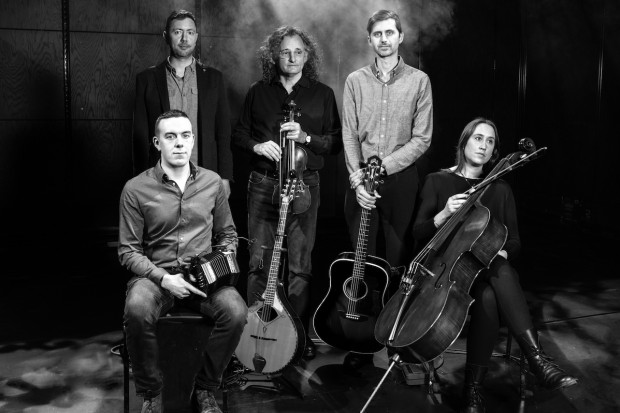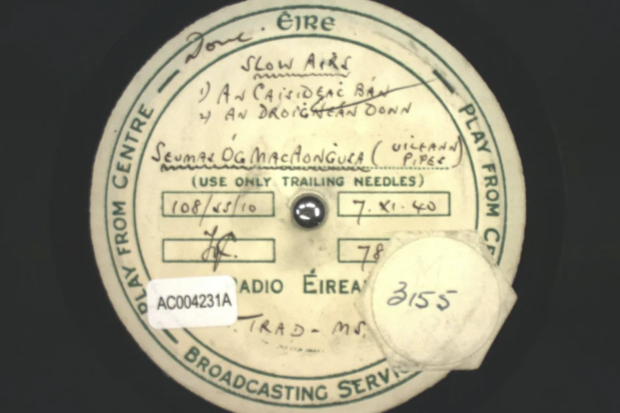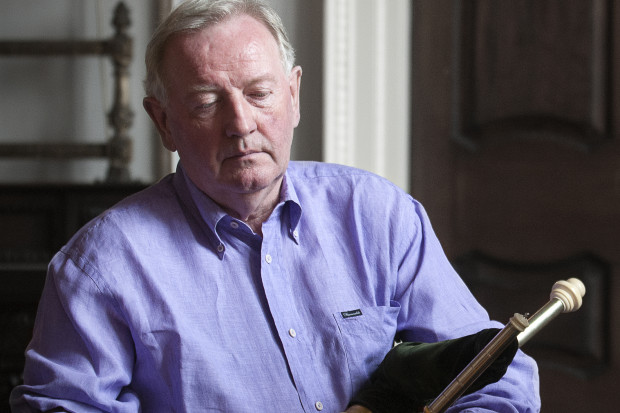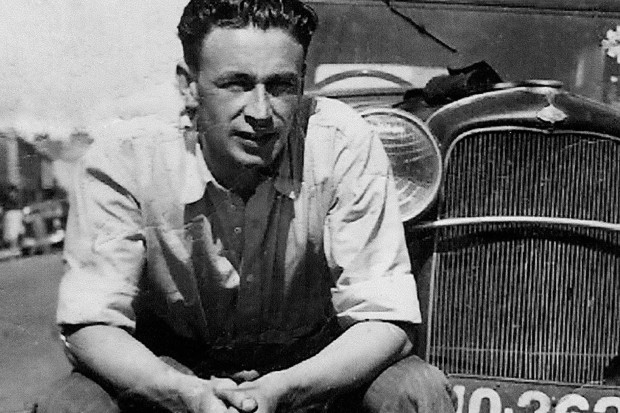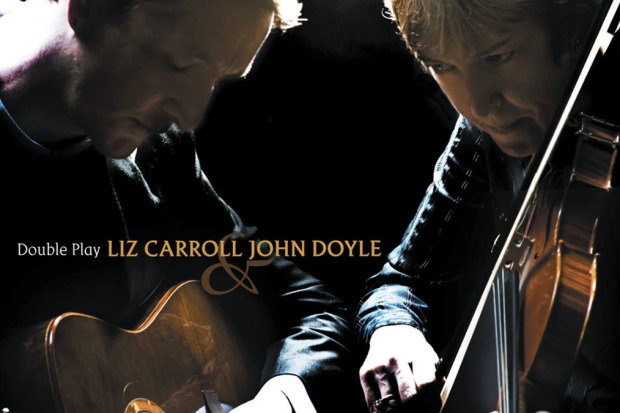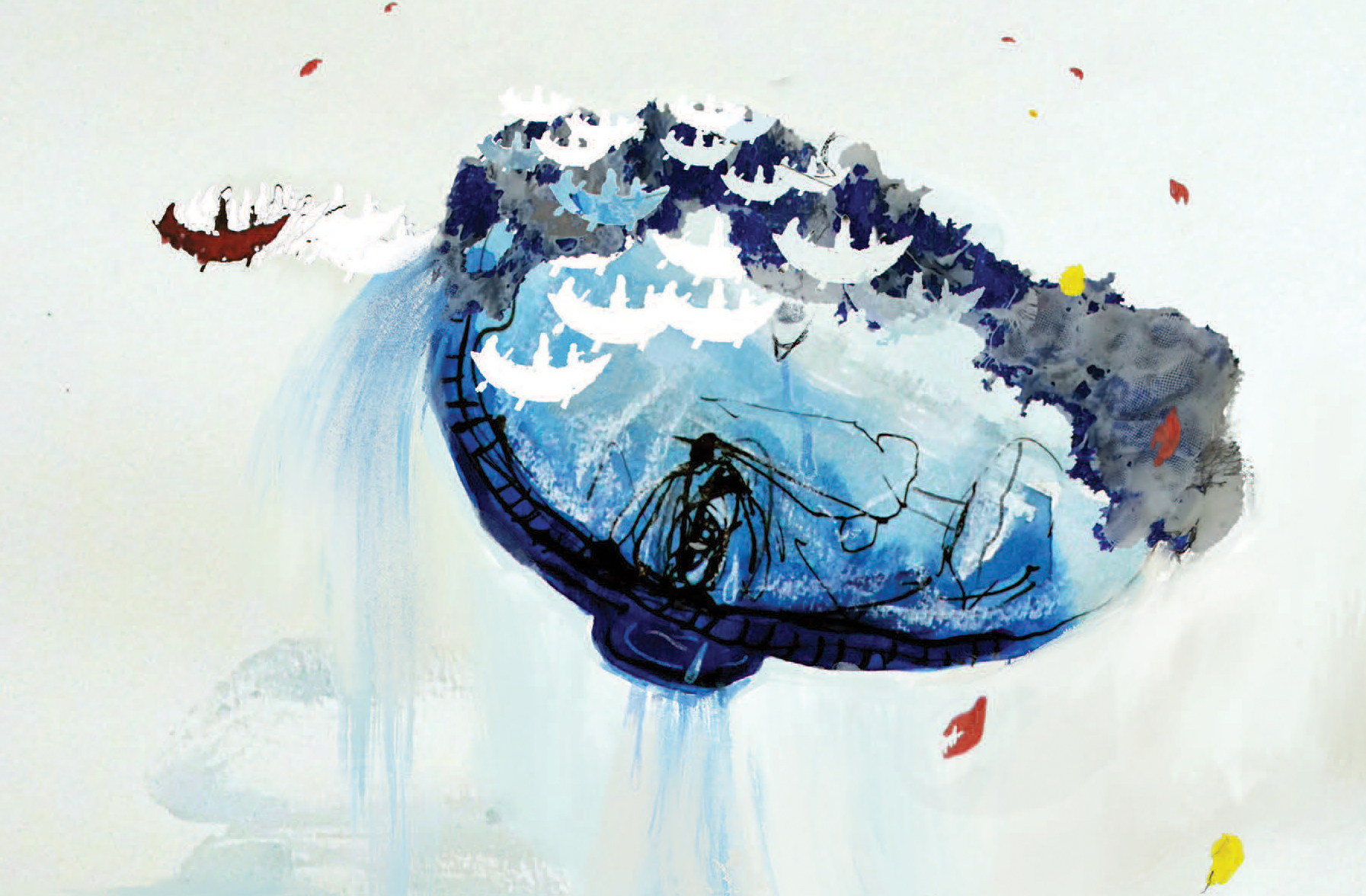
A detail from the cover image for ‘Collecting Music in the Aran Islands: A Century of History and Practice’ by Deirdre Ní Chonghaile.
The Many Sides of Music and Song Collecting
The history of Irish traditional music and song has long been informed by and intertwined with those who collected this music both in print and on recordings. Despite this, relatively little attention has been given to the act of collection itself, and so in this elegant and eloquent book, Deirdre Ní Chonghaile shines a new light on the contexts, processes, and motives of music collecting in the Aran Islands, and in particular on the largest island, Árainn (or Inis Mór). A scholarly yet approachable text, it is informed both by Ní Chonghaile’s background as an ethnomusicologist, as well as her ‘insider’ status: she is from Aran, has strong connections to some of the subjects of the book, and is also a fine traditional fiddle player. From this vantage point, she is sharply aware of how, despite the sustained scholarly interest in Aran as a place of unique cultural importance, and the ‘formidable Aran canon’ which such interest has generated, the music of Aran has tended to be marginalised or ignored in these writings. The foregrounding of this music then might be considered a secondary aim of the book, which, as Ní Chonghaile notes, is the first to discuss the traditional music and song of Aran.
The earliest to collect music on Aran was the well-known antiquarian George Petrie, whose famous 1857 visit there followed a large scholarly gathering organised by the British Association for the Advancement of Science – which was inspired by the romantic conception of Aran as a utopian sanctuary of an older, more authentic and ancient cultural heritage, one that deserved to be documented and preserved. Staying on for a fortnight after the event, Petrie and Eugene O’Curry worked together collecting words and music from singers each evening, Petrie playing the airs back on his violin after the arduous process of notating the melodies. Ní Chonghaile is careful to redress the neglect of O’Curry’s contribution to Petrie’s work in the opening chapter, describing him as Petrie’s ‘interlocutor, guide and touchstone’ (p. 35). Unfortunately, their Aran material was never fully prepared for publication, and remains fragmented; Ní Chonghaile here pairs six of Petrie’s thirty-four Aran airs with texts from the O’Curry manuscripts.
The second chapter contextualises and critiques the collection of songs Séamus Ennis made in Aran as part of his work with the Irish Folklore Commission. Given the relatively short time he spent there (compared to his time in Conamara), Ennis still managed to collect twenty-six songs. Nonetheless, what emerges from the text is his ambivalence towards the islands. He was highly impressed with the singing of Tomás ‘Tyrell’ Ó Briain, transcribing fourteen songs from him, and also recorded Máire Ní Dhioráin during her visit to the 1945 Oireachtas. Yet as Ní Chonghaile demonstrates, he essentially disengaged from the island and its music after 1946, and did not visit there as part of his later work with Raidió Éireann or the BBC. This was partly due to Aran’s unfortunate positioning between what he believed were ‘the two most extraordinary enclaves of Irish traditional music… Carna and West Clare’. Because of this, Ennis’ work on Aran is argued here to be more ‘everyday’ in its failings: Ní Chonghaile outlines several singers that Ennis missed out on entirely, or that he didn’t collect from.
Ethnographic rigour
While Ennis may have marginalised the music of Aran somewhat through his work, the American collector Sidney Robertson Cowell, and her collecting work, has itself been marginalised by subsequent authorities on traditional music. To redress this, Ní Chonghaile gives ample space to documenting her work on Aran, which was remarkable for its modern methods, its ethnographic rigour, and for the diversity of the material she collected. By the time of her engagement with Aran music in the 1950s, she had extensive experience as a folk music collector, working with Charles Seeger and John A. Lomax; Ní Chonghaile employs Cowell’s own words to great effect here, demonstrating her disdain for the clumsy techniques (and sometimes condescending attitudes) of her male colleagues and mentors.
Her route to the music of Aran was somewhat circuitous: her husband, the composer Henry Cowell, had met Aran singers through Robert O’Flaherty’s Man of Aran, when Maggie Dirrane and others who were in the film visited New York for its premiere in 1934; they sang at one of his lectures, and were also recorded by Henry. It was his visit back to Aran (as part of a European tour) to meet with Maggie Dirrane that spurred Sidney to action, as she realised that much of the music of the area had been unrecorded.
There is much lively detail in this chapter about the making of these recordings, underlining the value of Cowell’s ethnographic approach, which generated rich fieldnotes. It was also fascinating to read of her hypothesis that sean-nós might have fed into the melismatic singing styles of the southern United States, or be connected to singing styles across the Mediterranean, the Balkans and the Middle East. Here she anticipated the theories of an ancient transcultural singing style that Bob Quinn and Seán Ó Riada later promulgated (whether this amounts to an exoticisation of sean nós was discussed in this journal some time ago). As the book details, these theories were quietly discarded by Cowell, even though her exploration and analysis of keening practices fed into these. Ní Chonghaile highlights her work on the caoineadh as the most valuable and celebrated aspect of her work, particularly as her recordings were complemented by her experience of keening at funerals on the island in 1956, and her meticulous ethnographic accounts of these (usefully quoted at length in the text). As the chapter suggests, her work in total deserves much closer attention, in light of its quality and rigour; and given the unbalanced nature of the sole publication which emerged from her collection, Songs of Aran (which Séamus Ennis was consulted on), further access to the material would be welcome.
Insider and recordist
The final chapter turns to a different style of collecting, focusing on the recordings of Bairbre Quinn, who was working in her parents’ guesthouse (Conneelys) when Sidney Robertson Cowell recorded there in 1955. Undoubtedly inspired by this, she bought her own reel-to-reel recorder in 1958, and was a very early adopter of this new technology. As an amateur collector she made hugely diverse tapes of music, conversation, poetry, and radio broadcasts, recording her friends, family and visitors in both homes and public houses. Because she was an insider, with a knack for connecting with people due to her good humour and personable nature, the chapter argues that she was perfectly positioned to document the dramatic shift in the social life of the island (and indeed of Ireland), when the participatory practices of house visits faded (or moved to the pub).
Important questions are raised here about the nature of this form of amateur collecting, which was catholic in its purview, not distinguishing between different types of popular or vernacular music (country music, ballads, sean-nós songs and other styles are found in the collection). Indeed Ní Chonghaile describes Bairbre as a recordist – someone who recorded for the present, for their circle of friends, and for themselves. And yet she also discusses how these recordings also function as ‘memory work’, and how Bairbre (like other collectors) was inspired by the perception that this culture of song and story was disappearing, that it had a historical significance, and that it needed to be recorded for posterity. Ní Chonghaile’s own contextualisation, analysis and discussion of ‘Bailiúchán Bhairbre’ (and indeed its naming) further contributes to this transformation of a personal collection into an archive. She is also forthright in arguing for the inclusion and discussion of Bairbre’s surreptitious recordings, on the grounds that the local community welcomed and valued the recordings, regardless of how they were made. Here the benefit of being part of that community is most clearly demonstrated; it also reveals how sometimes scholarly or institutional thinking about the ownership of field recordings or other ethnographic material might not always tally with those of a community.
Deeply reflective study
There is no doubt that this is a tremendous achievement as a scholarly investigation into the collecting of songs and music on Aran. It is deeply reflective about the nature of collecting, brings a welcome attention to the work of two important woman collectors, and is lively and dynamic in its depiction of the collectors, singers and other characters. Having said that, the focus on the process of collection, and the vibrancy of its contextualisation, means that the songs and music themselves sometimes get lost in the admittedly rich and fascinating stories here. For example, the songs collected by Séamus Ennis are listed in full in two appendices, but no examples of airs or texts are discussed, which means that some brief comments about the ‘variety of singing styles’ on Aran aren’t expanded on in much detail. The same is true of the historically significant songs in Bailiúchán Bhairbre such as ‘Bóthar Gharraí Nua’, and the compositions and songs that were first collected by Cowell. Given the structuring and focus on historiography throughout the book, it might appear that this criticism is not relevant or unwarranted – but as the songs and music are the reason why these collectors acted as they did, it is a little frustrating that they sometimes remain out of reach here too. This aside, Collecting Music in the Aran Islands is a substantial work, a fine addition to the canon of Irish traditional music studies, and a timely contribution to current conversations on music collecting, cultural heritage, ownership, and dissemination.
Collecting Music in the Aran Islands: A Century of History and Practice by Deirdre Ní Chonghaile is published by the University of Wisconsin Press. Visit https://uwpress.wisc.edu/books/5119.htm.
Published on 24 March 2022
Adrian Scahill is a lecturer in traditional music at Maynooth University.










